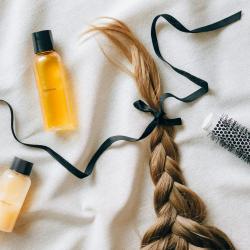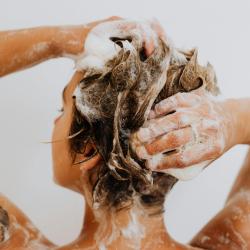How to Create a Custom Haircare Routine for Your Unique Needs
Creating a custom haircare routine tailored specifically to your unique needs can feel like a daunting task, but it’s one of the most rewarding steps you can take in your haircare journey. Just as no two individuals have the same skin needs, your hair requires personalized attention to look and feel its best. Here’s a comprehensive guide to understanding your hair and crafting a haircare routine that works for you.
Step 1: Assess Your Hair Type and Needs
Identify Your Hair Type
Understanding whether your hair is straight, wavy, curly, or coily is fundamental in choosing the right products and techniques. Here’s a brief overview:
- Straight Hair tends to be the most resilient and can get oily faster than other types.
- Wavy Hair has a natural bend and needs products that enhance and define the waviness while controlling frizz.
- Curly Hair requires moisture-rich products to define curls and reduce frizz without weighing them down.
- Coily Hair is the most fragile type, often needing intensive moisture and protective styling to maintain health.
Consider Hair Density & Porosity
- Hair Density: Refers to how many strands you have per square inch of your scalp. This can influence how well your hair holds styles and products.
- Hair Porosity: Determines how well your hair absorbs and retains moisture. Low porosity hair might need lighter products, while high porosity hair benefits from richer formulations.
Step 2: Define Your Hair Goals
Do you want to reduce frizz, combat dryness, stimulate growth, or maintain your color? Clearly defining your goals will help you select appropriate products and tailor your routine to meet these objectives.
Step 3: Select the Right Products
Shampoo and Conditioner
Choose products that address not only your hair type but also your scalp’s needs. If you have dry hair but an oily scalp, consider a balancing shampoo coupled with a hydrating conditioner.
Treatments and Masks
Weekly or bi-weekly treatments such as protein masks, moisturizing masks, and oil treatments cater to specific needs like strengthening, hydration, and scalp care.
Styling Products
Different textures require different styling products. Serums, leave-in conditioners, and mousses can enhance texture, add shine, and provide hold.
Step 4: Establish a Routine
Washing Frequency
Adjust depending on your hair’s oil production, type, and lifestyle. Curly and coily hair types often benefit from washing less frequently to prevent dehydration.
Conditioning and Detangling
Never skip conditioner. Use a wide-tooth comb or a brush designed for wet hair to avoid breakage. Those with finer hair might focus on the ends to prevent oiliness at the roots.
Heat Styling and Protection
If you use heat tools, always apply a heat protectant to minimize damage. Limit heat styling to preserve the health of your hair.
Step 5: Monitor and Adjust
Hair is dynamic and can change with the seasons, lifestyle, and age. Regularly reevaluating your haircare routine ensures it continues to meet your evolving needs.
Step 6: Maintain a Healthy Scalp
A healthy scalp is a foundation for beautiful hair. Regular scalp massages, exfoliating treatments, and clarifying shampoos can keep your scalp in top condition.
Conclusion
Creating a custom haircare routine is a journey of understanding and responding to your hair’s unique needs. It involves selecting the right products, sticking to a routine, and making informed adjustments. Ultimately, it’s about achieving the healthy, beautiful hair you desire while being flexible and attentive to your hair’s changing needs. With patience and perseverance, your efforts will surely reflect in the health and appearance of your hair.






















